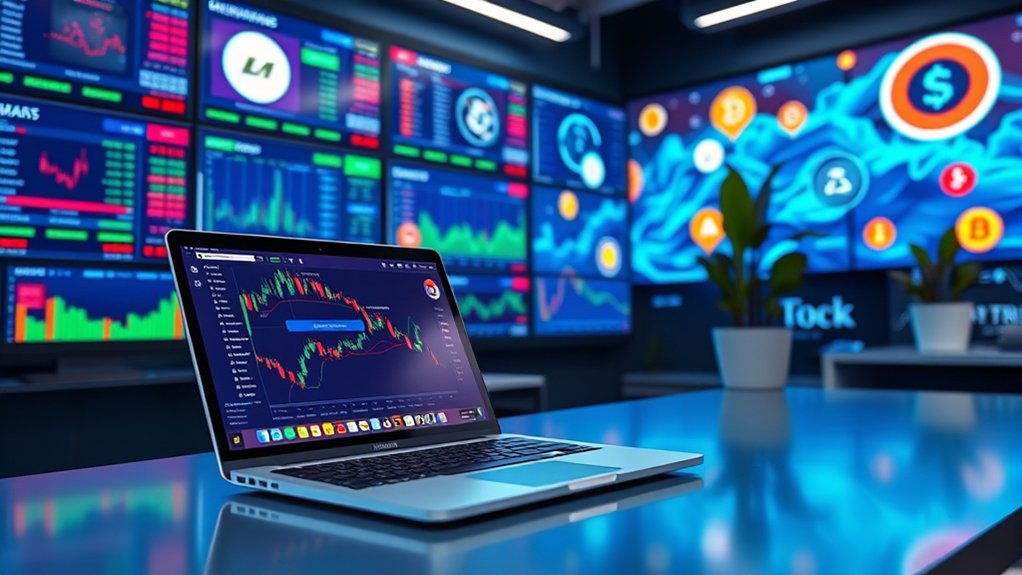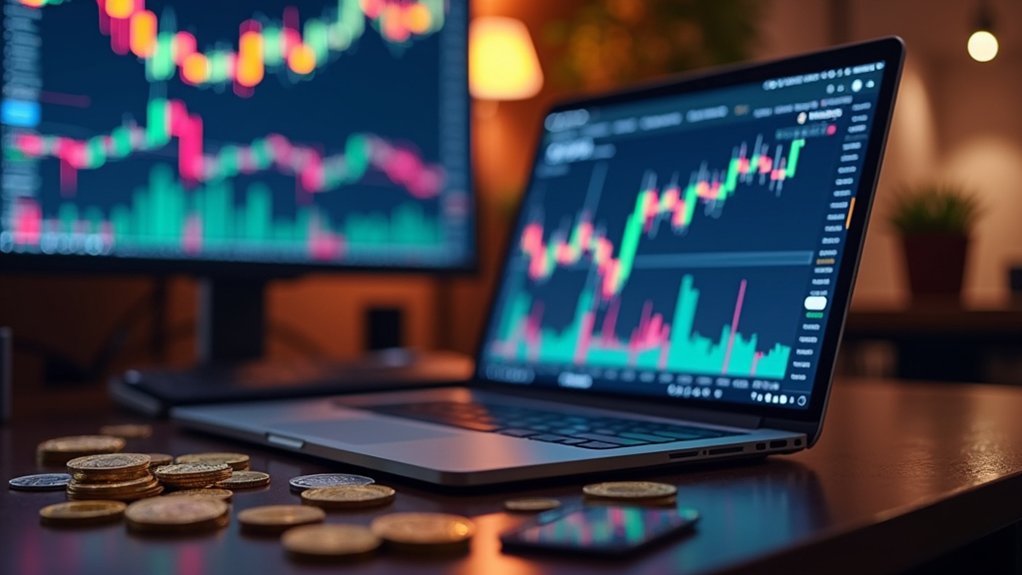When it comes to trading cryptocurrency, the choices are overwhelming. Centralized exchanges like Coinbase and Binance are user-friendly, but they come with higher fees. Kraken is a solid pick for security freaks. On the flip side, decentralized exchanges offer privacy and autonomy, but good luck maneuvering those. Hybrid exchanges exist, trying to marry the two worlds. It’s a jungle out there. Stick around, and you’ll uncover more about these platforms and their quirks.

In a world where money is digital and the rules are still being written, cryptocurrency trading platforms have become the wild west of finance. With options galore, traders can feel like kids in a candy store—if that candy store was filled with wild price swings and questionable security practices.
Centralized exchanges (CEX) like Coinbase and Binance stand tall, offering user-friendly interfaces and a buffet of cryptocurrencies. But hey, who doesn’t love a hefty trading fee? It’s practically a rite of passage. Kraken offers strong security features, making it a popular choice among users concerned about safety. Additionally, many CEX operate under regulatory guidelines for transparency and compliance, enhancing user trust. Crypto exchanges facilitate fast transactions, ensuring that users can trade on-demand.
Centralized exchanges like Coinbase and Binance serve up convenience and a smorgasbord of coins—just don’t forget to budget for those trading fees!
Then there are decentralized exchanges (DEX), where the mantra is “no middleman, no problem.” They let users trade directly on the blockchain. Sounds great, right? But good luck maneuvering that labyrinth.
Hybrid exchanges attempt to have it both ways, blending centralized convenience with decentralized security. Cross-chain exchanges? They’re the tech-savvy cousin that lets you trade across different blockchain networks. Wrapped token exchanges? Just another way to wrap your head around the chaos.
When it comes to fees, they can be as confusing as your high school math homework. Trading fees vary widely; Kraken boasts low fees for advanced traders, while others might slap on withdrawal fees that’ll make your head spin. Hidden fees are lurking, ready to pounce when you least expect them. Don’t say they didn’t warn you!
Security is vital, and some exchanges like Bitget use multi-signature wallets to keep your assets safe. Two-factor authentication? Definitely a must. But remember, even the best encryption can’t save you from a careless click.
User interfaces range from “easy-peasy” to “what in the world is this?” Beginner-friendly platforms are a godsend, while advanced trading features can make pros feel like kings.
Earning opportunities abound—staking, rewards programs, and even copy trading for those who want to ride the coattails of the pros. In this chaotic landscape, the best platform ultimately depends on what kind of trader you want to be.
Frequently Asked Questions
What Is the Minimum Deposit Required to Start Trading?
The minimum deposit to kick off trading varies wildly.
Binance? Zero for most coins—nice, right?
Coinbase slaps a $50 price tag on it, with some countries being weirdly specific.
Kraken? Depends on the coin; Bitcoin can be a fraction of a coin.
And eToro? Good luck—$50 to $100, unless you’re in the UK or US, then it’s a measly $10 or $1.
Welcome to the chaotic world of crypto trading!
Are There Any Trading Fees on These Platforms?
Trading fees? Oh boy, they can be a real headache. Most platforms have them, and they vary wildly.
Binance? 0.1% starting fees. KuCoin? Same deal. Crypto.com is a bit cheaper if you play the token game.
Coinbase hits you with 0.6% unless you’re a volume beast. And don’t forget about deposit and withdrawal fees—some are downright ridiculous.
Just prepare for a little wallet pain, folks. It’s part of the game.
Can I Trade Cryptocurrency Using My Mobile Device?
Absolutely, trading cryptocurrency on a mobile device is not just possible—it’s the norm these days.
Crypto apps let users trade anytime, anywhere. Instant notifications? Check. User-friendly? Totally.
But wait! There are drawbacks. Security risks loom large, and that tiny screen can be a pain. Emotional trading? Oh, that’s a thing too.
So, yes, you can trade on your phone, but don’t forget: it’s a double-edged sword.
Happy trading (or not)!
How Do I Withdraw Funds From My Trading Account?
Withdrawing funds from a trading account? Simple, right? Well, not quite.
First, you’ll likely need to convert your crypto to cash. Then, choose a method—bank transfer, digital wallet, or even that weird Bitcoin ATM down the street.
Watch out for fees; they can bite. And of course, expect some verification nonsense. Sometimes, it takes minutes, other times, days.
Just remember: patience isn’t always a virtue in crypto!
Is Customer Support Available 24/7 on These Platforms?
Customer support? Oh, it’s a big deal.
Kraken nails it with 24/7 live chat and specialists on standby.
CEX.IO? Not quite as committed. They dabble in support, but it’s not always around the clock.
Then there’s Crypto Exchange, which also offers 24/7 help.
In this fast-paced crypto world, having support when you need it is essential. Trust is built through quick responses, and nobody likes waiting, right?





